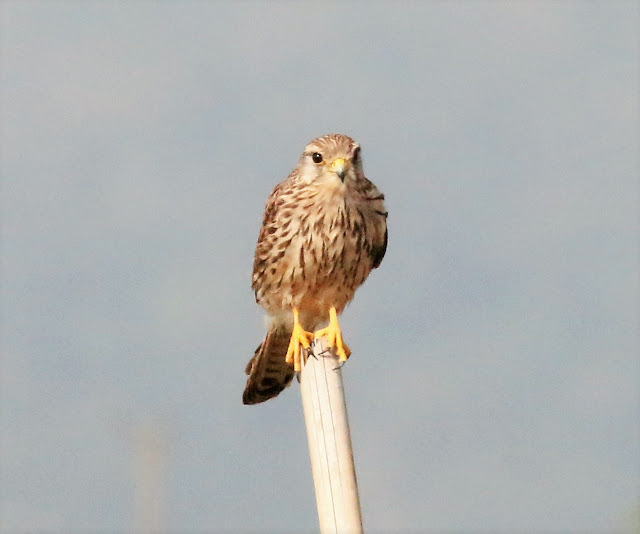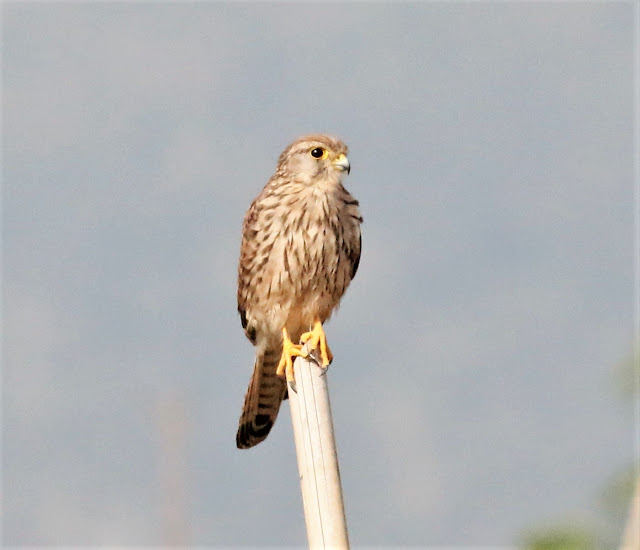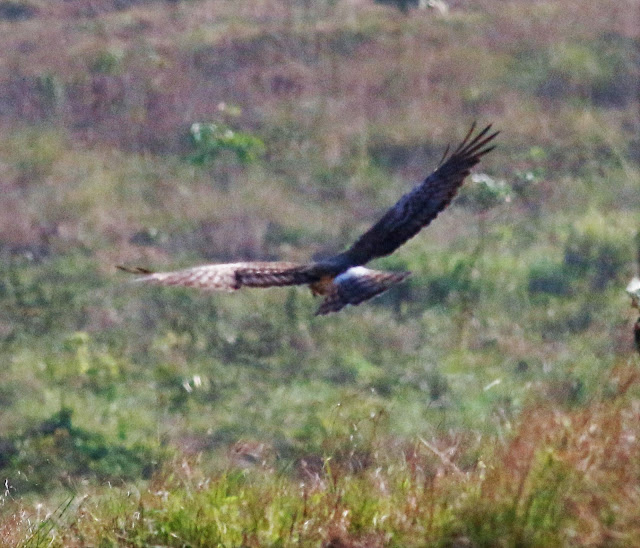Once a upon the time, you can find numerous birding couples in this region who like to watch raptors. Some are still quietly active while some new ones are also emerging. There are many reasons for one to watch birds of prey. It could be due to their magnificent and highly variably under wing patterns or perhaps it could be due to their majestic appearance as well as fascinating behaviour. Some ornithologist even spent their entire life to study solely on raptors. At the end of this post you might understand just why.
Here are some of the birds of prey which were spotted in Peninsular Malaysia from Dec 2017 to March 2018. Majority of them were Oriental Honey Buzzards as expected.
 |
| Oriental Honey Buzzard (pale morph) |
This should be an Oriental Honey Buzzard (OHB), soaring upwards in a truly raptor like way.
My personal opinion: Dark wings tips and narrow tail bands points it to a juvenile. While pale face and narrow trailing edge bands points it to a female.
This is most likely a migrant orientalis which reported to migrate from Siberia and Sakhalin in Russia, North East China as well as from Japan and Korea (HBW alive)
It glides on flat wings.
From above, its upper wings coverts show a darker coloration and its primaries slightly held upwards. Note: its whitish rump. It was also the same bird as above.
A twitch of its tail were commonly observed in raptors in flight.
Below is a different morph of OHB - Pernis ptilorhyncus torquatus
According to local birding experts here, this is an adult male migrant OHB. Identified from its greyish face. The resident P.p torquatus (tweedle morph) is reported to have an overall black head. Note its lack of whitish rump.
Its status at the top of the food chain certainly makes it a fearless raptor as it make a small turn and then headed straight at my direction.
With its wings held-up high and head tilted lower, its approach certainly makes it looks like a vulture.
It flew just about 30 - 40 meters away, knowing fully well of my presence but he was not bothered at all as it slowly glides past me.
Field guides have described OHB eyes as brown, dark brown to orange.
This was the OHB way of making a fly past.
Below is probably the only one of its kind photo which shows a Changeable Hawk Eagle (dark morph) carrying a domestic chicken ! This raptor is a resident raptor.
Only upon cropping the photo that i realised it was actually carrying a prey. Its loud calls of "Kwi Kwi" was quite similar to a Crested Serpent Eagle (CSE) except that it has two notes instead of three notes from a CSE.
Here is another raptor (a Brahminy Kite) holding and eating a prey while in flight.
 |
| Crested Serpent Eagle |
With a mouth so wide open, no wonder its calls can be heard from quite a distance.
 |
| White-bellied Sea Eagle |
A truly huge resident raptor soaring overhead.
Here is another migrant raptor which frequent here almost like clock work and continuously every year.
Black Kite (Milvus migrans)
All the above three raptors are of different individuals.
If you have been regularly watching raptors in this region, you will most likely realised that some migrant raptors actually used this region (especially near the coastal regions) as their staging / re-fueling base. Here are some individuals which i have spotted on different days from the same observation site in Northern Peninsular Malaysia:
 |
| Black Baza (Aviceda leuphotes) |
From a distance, this raptor looks just slightly larger than a common rock pigeon. According to raptor experts, the more stripes on its body, indicates that of a female.
This one above should be a male then.
They were seen criss-crossing from the same area on several occasions. Usually in late mornings.
When i first posted online the photo below, it has created some buzz among the local birders here due to its whitish spots on its upperwings and its whitish rump. I have initially thought it was a juvenile pied harrier as well !
Luckily for me, this raptor did a "U" turn and it was eventually confirmed as an Oriental Honey Buzzard (OHB) from the above photo! Amazing indeed !
Here are a few more different OHBs which have been observed:
The OHB above was actually diving down towards some swiflets but i think it did not succeed in grabbing anyone.
All these OHBs are different individuals as observed from their wing and tail patterns.
Occasionally you can find them thermaling together. The above OHB presumably either a juvenile/a female was slightly smaller than the OHB below it.
HAPPY RAPTOR WATCHING !












































































